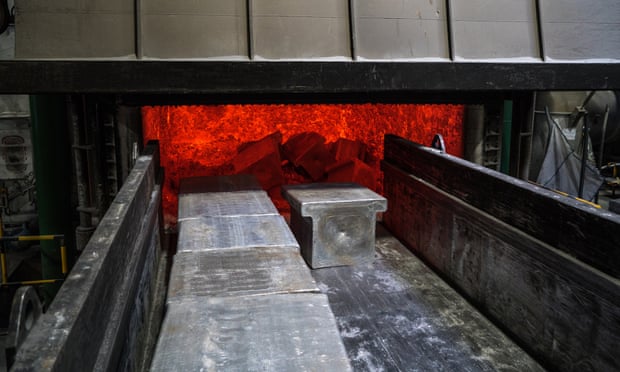Tomago – Egypt Today
Australia’s largest energy consumer has said it plans to switch to largely renewable energy supplies in 2029 in a move energy analysts say will dramatically reduce NSW’s carbon emissions.
Tomago Aluminum, Australia’s largest aluminum smelter, is said to be in talks with renewable energy suppliers before the current energy contract with AGL expires in 2028.
The company’s chief executive, Matt Hoyle, said the goal for the smelter near Newcastle is to be 100% renewable by 2029.
“There are further cost improvements to the equation before fixed renewables are a viable option for us, but we are always optimistic,” he added.
It was a significant announcement from Howell, who in the past has questioned the cost of operating an entire renewable energy smelter and expressed support, said Simon Holmes Court, senior advisor to the University of Melbourne’s School of Climate and Energy and a clean energy commentator. for a government-funded gas-fired power plant in Sayyad.
“It will have a huge impact on NSW emissions if they retrofit this smelter,” he said.
Holmes A Court said Home – Tomago uses about 11% of NSW’s grid capacity.
Tomago Aluminum is managed as an independent joint venture by Rio Tinto, CSR and Hydro Aluminum.
Holmes A. Court said there could be more significant emissions cuts and investment in new energy infrastructure if other smelters that were largely backed by coal contracts, such as Rio Tinto’s Boyne Smelters in Gladstone, change as well.
Smelters use about 10% of the energy of the East Coast grid.
He said steel and aluminum manufacturers are likely to move to green energy contracts as the European Union and other export markets look to introduce Carbon Limits Adjustment Mechanisms (CBAM) from 2026.
“They will be taken away from a large number of important markets if they do not decarbonise,” Holmes-a-Court said.
“Tomago can sign a zero-emissions energy contract at a much lower cost than it is now paying ahead of the proposed 2026 EU CBAM.”
Dan Gaucher, director of climate and environment at the Australian Center for Corporate Responsibility, said the announcement should signal the end of AGL’s Bayswater power plant, which is due to close in 2035.
“AGL is unlikely to make a profit from Bayswater after 2029,” Gaucher said.
“This result should be applauded. Because these decisions remove risks for the Australian industry in the face of carbon limit adjustment mechanisms.”
Sam Mila, Hunter’s involvement with Beyond Zero Emissions, said Tomago’s announcement was a strong sign of the region’s manufacturing future.
“This will keep our local industry competitive in the global market and advance our vision to establish Hunter as Australia’s premier renewable energy industrial park,” she said.
“Tomago’s commitment demonstrates the potential for Hunter to become the electric driver of the Australian economy and the importance of meeting customer demand for a carbon-neutral future.”
The suspension was requested by Tomago Aluminum.
AGL’s chief operating officer, Markus Prokhov, said the company is committed to the Hunter region and is working to advance its plans to “transform our thermal generation sites into integrated, low-carbon industrial power centres”.
“This includes advances in a grid-scale battery, wind, solar and thermal energy storage system, and a waste-to-energy facility, while exploring the feasibility of pumping water at Bell Mountain,” he said.
Prokhov said there were no planned changes to the closing dates of AGL’s coal-fired power plants.

